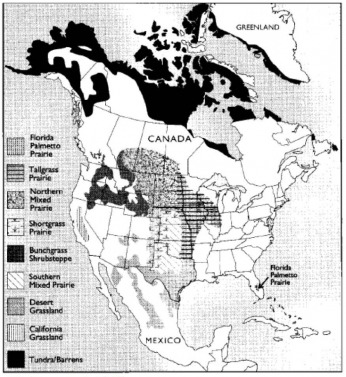Interactions between species, such as predation, competition, parasitism, and an array of mutualisms, have a profound influence on the structure of communities. The loss of a species or a change in its abundance, particularly for species that interact with many others, can have a marked effect on ecological processes throughout fragmented
landscapes. Changes to predator-prey relationships, for example, have been revealed by studies of the level of predationon birds’ nests in fragmented landscapes (Wilcove 1985). An increase in the amount of forest edge, a direct consequence of fragmentation, increases the opportunity for generalist predators associated with edges or modified land-uses to prey on birds that nest in forest fragments. In Sweden, elevated levels of nest predation (on artificial eggs in experimental nests) were recorded in agricultural land and at forest edges compared with the interior of forests (Andrén and Angelstam 1988). Approximately 45% of nests at the forest edge were preyed upon compared with less than 10% at distances >200 m into the forest. At the landscape scale, nest predation occurred at a greater rate in agricultural and fragmented forest landscapes than in largely forested landscapes (Andrén 1992). The relative abundance of different corvid species, the main nest predators, varied in relation to landscape composition.
landscapes. Changes to predator-prey relationships, for example, have been revealed by studies of the level of predationon birds’ nests in fragmented landscapes (Wilcove 1985). An increase in the amount of forest edge, a direct consequence of fragmentation, increases the opportunity for generalist predators associated with edges or modified land-uses to prey on birds that nest in forest fragments. In Sweden, elevated levels of nest predation (on artificial eggs in experimental nests) were recorded in agricultural land and at forest edges compared with the interior of forests (Andrén and Angelstam 1988). Approximately 45% of nests at the forest edge were preyed upon compared with less than 10% at distances >200 m into the forest. At the landscape scale, nest predation occurred at a greater rate in agricultural and fragmented forest landscapes than in largely forested landscapes (Andrén 1992). The relative abundance of different corvid species, the main nest predators, varied in relation to landscape composition.
The hooded crow (Corvus corone cornix) occurred in greatest abundance in heavily cleared landscapes and was primarily responsible for the greater predation pressure recorded at forest edges. Many mutualisms involve interactions between plants and animals, such as occurs in the pollination of flowering plants by invertebrates, birds or mammals. A change in the occurrence or abundance of animal vectors, as a consequence of fragmentation, can disrupt this process. For many plant species, habitat fragmentation has a negative effect on reproductive success, measured in terms of seed or fruit production, although the relative impact varies among species (Aguilar et al. 2006). Plants that are self-incompatible (i.e. that depend on pollen transfer from another plant) are more susceptible to reduced reproductive success than are self-compatible species. This difference is consistent with an expectation that pollination by animals will be less effective in small and isolated fragments. However, pollinators are a diverse group and they respond to fragmentation in a variety of ways (Hobbs and Yates 2003). Changes in ecological processes in fragments and through out fragmented landscapes are complex and poorly understood.
Disrupted interactions between species may have flow-on effects to many other species at other trophic levels. However, the kinds of changes to species interactions and ecological processes vary between ecosystems and regions because they depend on the particular sets of species that occur. In parts of North America, nest parasitism by the brown-headed cowbird (Molothrus ater) has a marked effect on bird communities in fragments (Brittingham and Temple 1983); while in eastern Australia, bird communities in small fragments may be greatly affected by aggressive competition from the noisy miner (Manorina melanocephala) (Grey et al. 1997). Both of these examples are idiosyncratic to their region. They illustrate the difficulty of generalizing the effects of habitat fragmentation, and highlight the importance of understanding the consequences of landscape change in relation to the environment, context and biota of a particular region.














0 comments:
Post a Comment